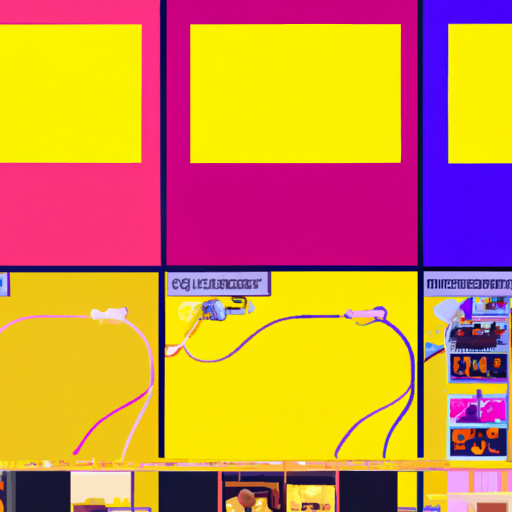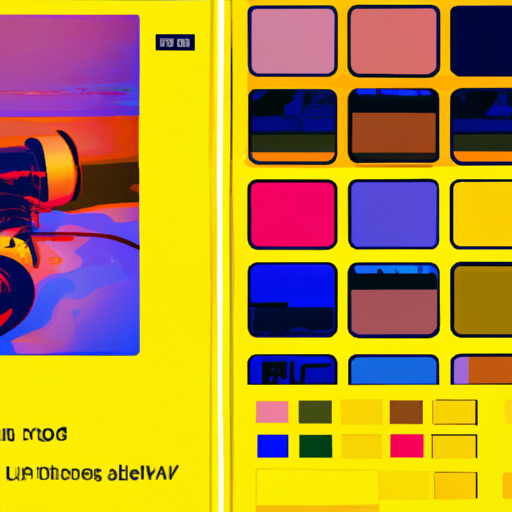
-
Table of Contents
Interface Design for Photo and Video Editing Apps

Photo and video editing apps have become increasingly popular in recent years, with millions of users relying on them to enhance their images and videos. As the demand for these apps continues to grow, it is crucial for developers to prioritize interface design to ensure a seamless and user-friendly experience. In this article, we will explore the key principles and best practices for interface design in photo and video editing apps, backed by research, case studies, and industry statistics.
The Importance of Interface Design
Interface design plays a vital role in the success of any app, and photo and video editing apps are no exception. A well-designed interface can significantly impact user satisfaction, engagement, and retention. According to a study conducted by Google, users are 88% more likely to engage with an app that provides a positive user experience. Therefore, investing time and effort into creating an intuitive and visually appealing interface is crucial for the success of photo and video editing apps.
Understanding User Needs
Before diving into the design process, it is essential to understand the needs and expectations of the target audience. Conducting user research and gathering feedback can provide valuable insights into user preferences and pain points. By understanding the target audience, developers can create an interface that caters to their specific needs, resulting in a more satisfying user experience.
Case Study: Adobe Photoshop
Adobe Photoshop, one of the most popular photo editing apps, is a prime example of an interface designed with user needs in mind. Through extensive user research, Adobe identified that users wanted a powerful yet intuitive editing experience. As a result, they developed a user-friendly interface that allows users to easily access and manipulate various editing tools. The interface is designed to be visually appealing and organized, making it easy for both beginners and professionals to navigate the app.
Simplicity and Clarity
When it comes to interface design for photo and video editing apps, simplicity and clarity are key. Users should be able to understand and navigate the app without feeling overwhelmed or confused. A cluttered interface can lead to frustration and a high learning curve, resulting in users abandoning the app.
To achieve simplicity and clarity, designers should focus on the following:
- Minimalistic design: Avoid cluttering the interface with unnecessary elements. Each feature and tool should have a clear purpose and be easily accessible.
- Consistent layout: Maintain a consistent layout throughout the app to provide a sense of familiarity and ease of use. Users should be able to predict where certain features or tools are located.
- Clear labeling: Use descriptive labels for buttons, icons, and menus to ensure users understand their functionality. Ambiguous or confusing labels can lead to frustration and hinder the editing process.
Efficient Workflow
Efficiency is crucial in photo and video editing apps, as users often have limited time and want to achieve their desired results quickly. An efficient workflow can significantly enhance the user experience and increase user satisfaction. Designers should focus on streamlining the editing process and reducing unnecessary steps.
Here are some strategies to improve workflow efficiency:
- Smart defaults: Set intelligent defaults for various editing parameters based on user preferences and industry standards. This saves users time by eliminating the need to manually adjust settings for every edit.
- Keyboard shortcuts: Incorporate keyboard shortcuts for frequently used actions to expedite the editing process. This allows experienced users to navigate the app more efficiently.
- Drag-and-drop functionality: Implement drag-and-drop functionality to enable users to easily import and arrange media files. This eliminates the need for manual file browsing and speeds up the editing process.
Visual Feedback and Affordances
Providing visual feedback and affordances is essential in photo and video editing apps to guide users and enhance their understanding of the interface. Visual cues help users understand the purpose and functionality of various elements, reducing the learning curve and increasing user confidence.
Here are some examples of visual feedback and affordances:
- Hover effects: When users hover over a button or tool, provide visual feedback such as color change or highlighting to indicate interactivity.
- Progress indicators: When performing resource-intensive tasks like rendering or exporting, display progress indicators to keep users informed about the status of their edits.
- Contextual tooltips: Use tooltips to provide additional information or instructions when users hover over specific elements. This helps users understand the purpose and functionality of different tools.
Responsive Design
In today’s mobile-centric world, it is crucial for photo and video editing apps to have a responsive design that adapts to different screen sizes and orientations. A responsive design ensures that users can edit their photos and videos seamlessly across various devices, including smartphones, tablets, and desktops.
Key considerations for responsive design include:
- Optimized layout: Design the interface to adapt to different screen sizes without sacrificing usability. Elements should be appropriately sized and spaced to ensure easy interaction on both small and large screens.
- Touch-friendly controls: For mobile devices, use touch-friendly controls such as large buttons and sliders that are easy to manipulate with fingers.
- Gesture support: Incorporate gesture support for common actions like zooming, panning, and rotating. This enhances the editing experience on touch-enabled devices.
Summary
Interface design plays a crucial role in the success of photo and video editing apps. By understanding user needs, prioritizing simplicity and clarity, improving workflow efficiency, providing visual feedback and affordances, and implementing responsive design, developers can create a seamless and user-friendly experience. Adobe Photoshop serves as a prime example of an app that excels in interface design, resulting in a loyal user base and industry recognition.
Remember, a well-designed interface not only enhances user satisfaction but also increases engagement and retention. By incorporating the principles and best practices discussed in this article, developers can create photo and video editing apps that stand out in a competitive market and provide users with a powerful and enjoyable editing experience.
